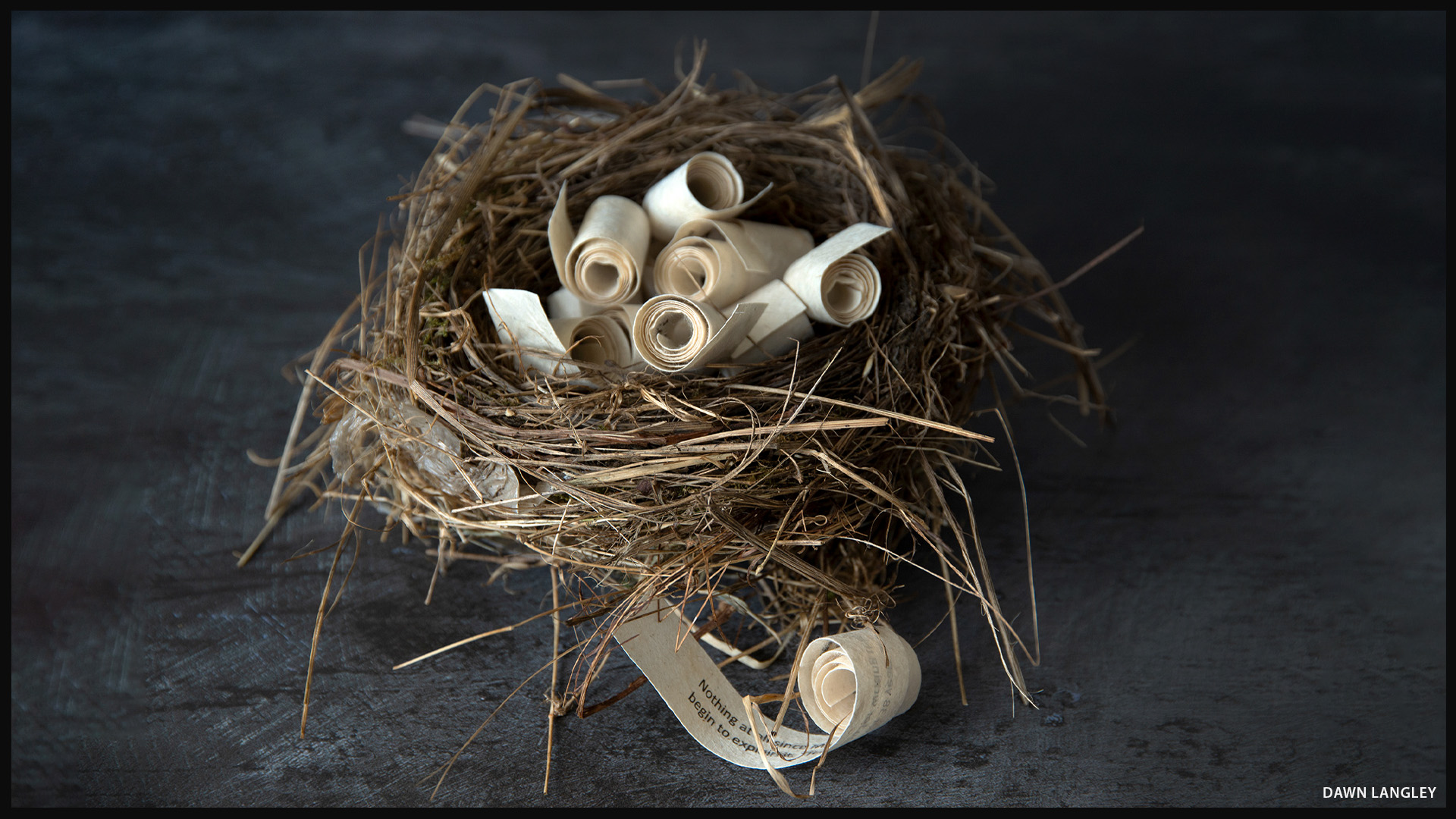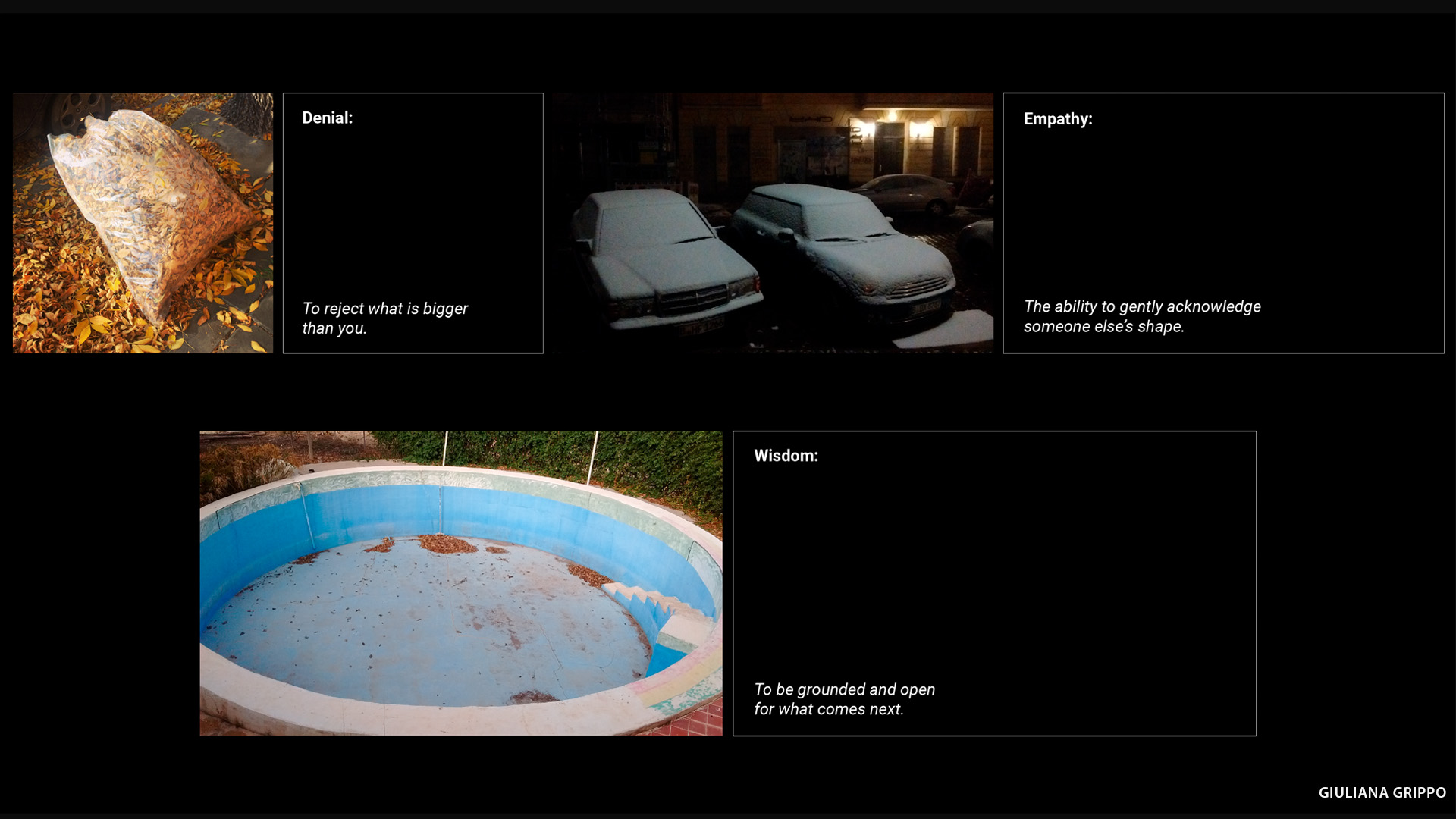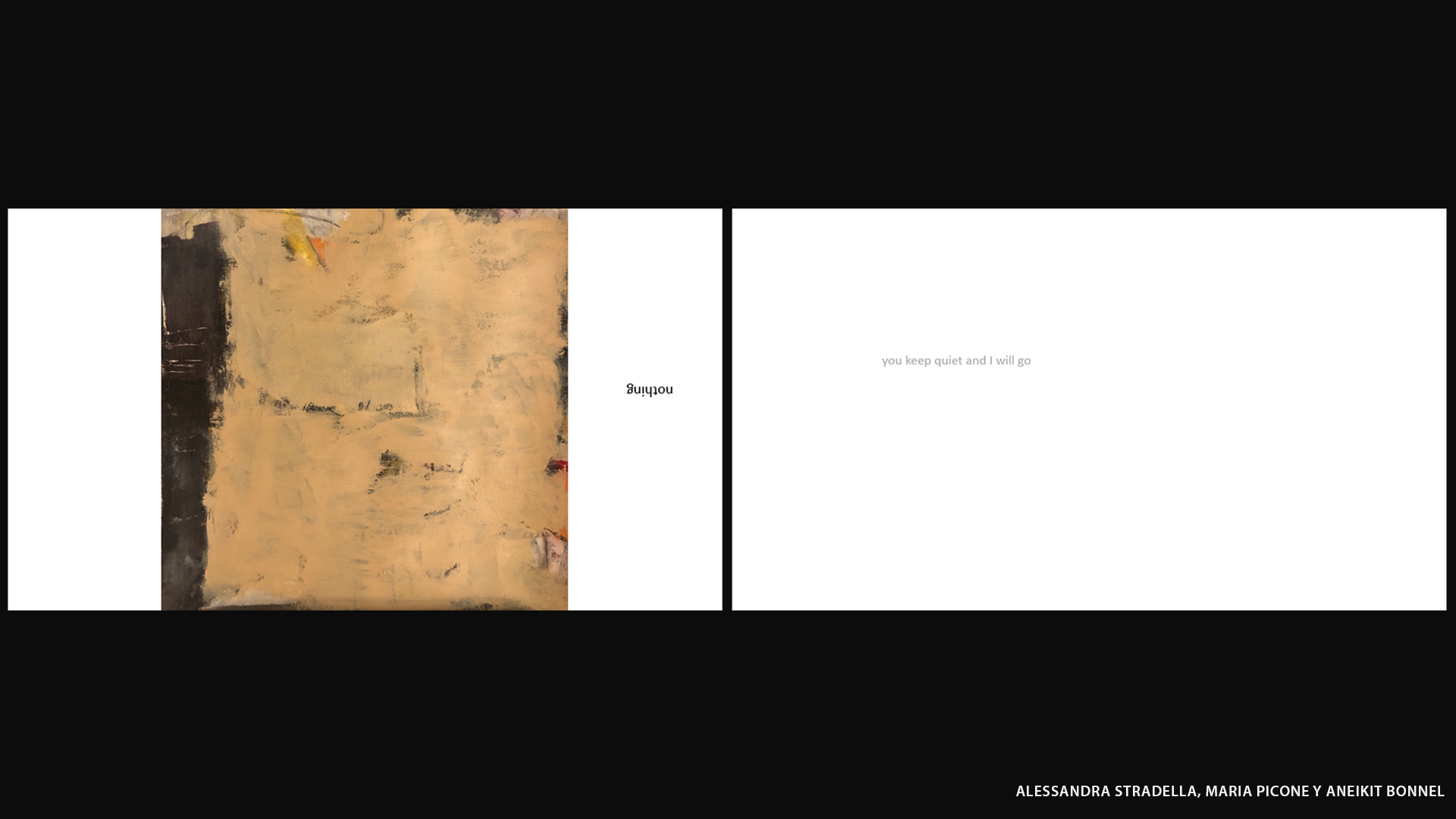Artists
United Kingdom
Christine Bruce
Together Apart: #Shelter
19.08.20 09.09.20
Christine is largely self-taught and has been developing her art practice for the past 10 years as a part-time student with the Open College of the Arts in UK, working towards a Bachelor in Creative Arts.
She is developing her practice as a printmaker, exploring the possibilities of expanded print media and 3-dimensional objects in response to the phenomena of loss and remembrance.
CHRISTINE ABOUT TOGETHER APART: #SHELTER
My responses to this revolve around my shelter being a place with boundaries, a territory, a plot that can be marked out. This may be an emotional space or state, but in terms of Covid, this is phenomenological, not conceptual. Materiality, albeit on a nanoscale, cannot be denied.
So, my thought processes are very much with materials and barriers. Obviously this does chime with the work I’ve been doing on poetic, performative spaces: and it just so happens that the space I’m in is the one that inspired much of the previous work: it is a space for performance of memory, and particularly this year, when people who might be here with me are, for one reason or another, not, although their possessions, which do so much to conjure up their absence, are here in the rooms and in the attic.
So my answer to the question, what is my shelter today, is, my house. My shelter is my house, the walls of which I can hide behind, while a garden fence and gate mark out my territory, which is backed up by fiscal documents attributing this patch of land to me as a result of a financial exchange: further legal documents state who should own it next, when I am no longer here. In this way we stake our claims to the earth, both to the soil and to the planet. My shelter is my house, and it is also where I have brought my dead.
BIO
Christine Bruce
1959 | Scotland
Lives in the Netherlands
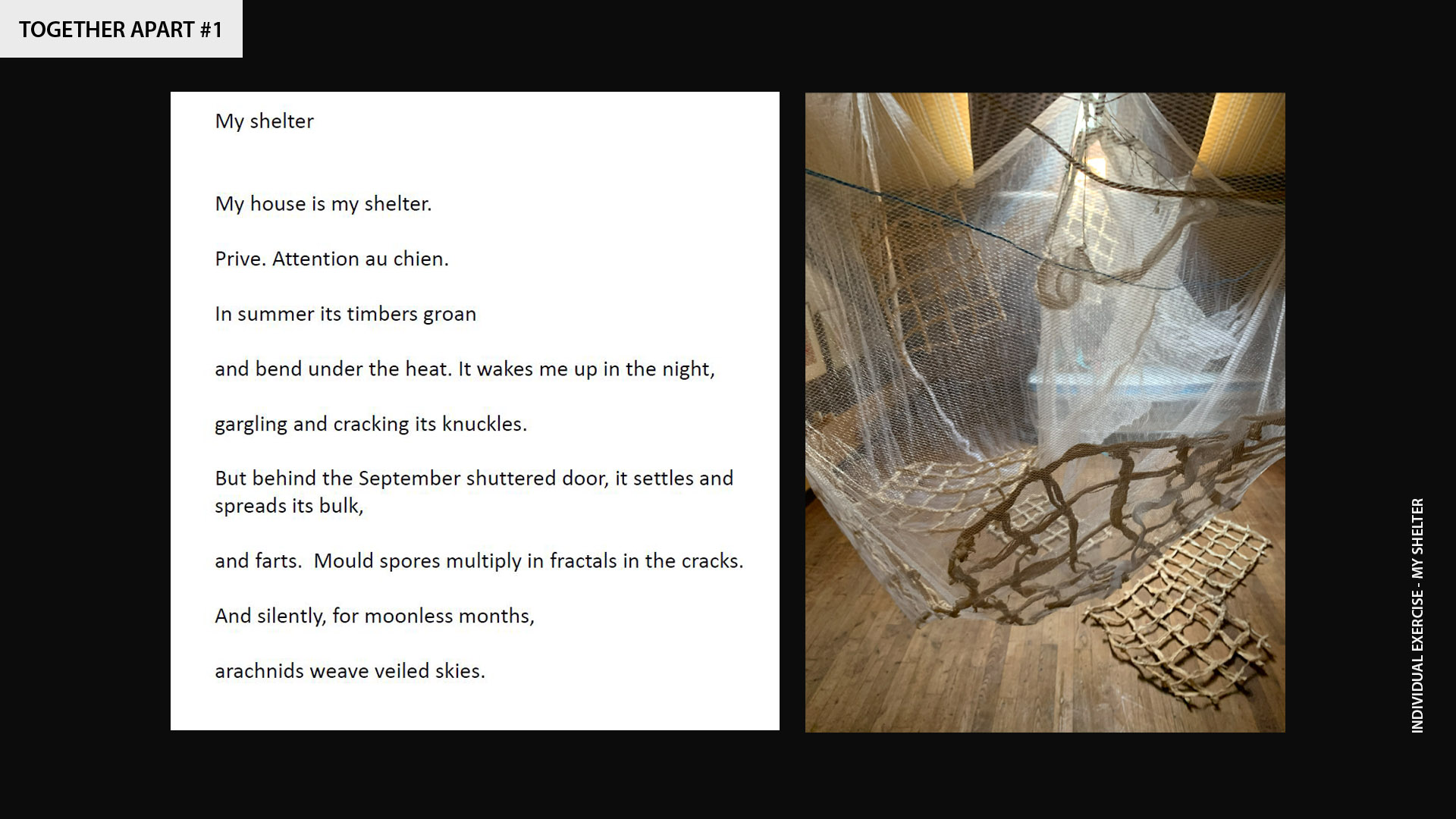

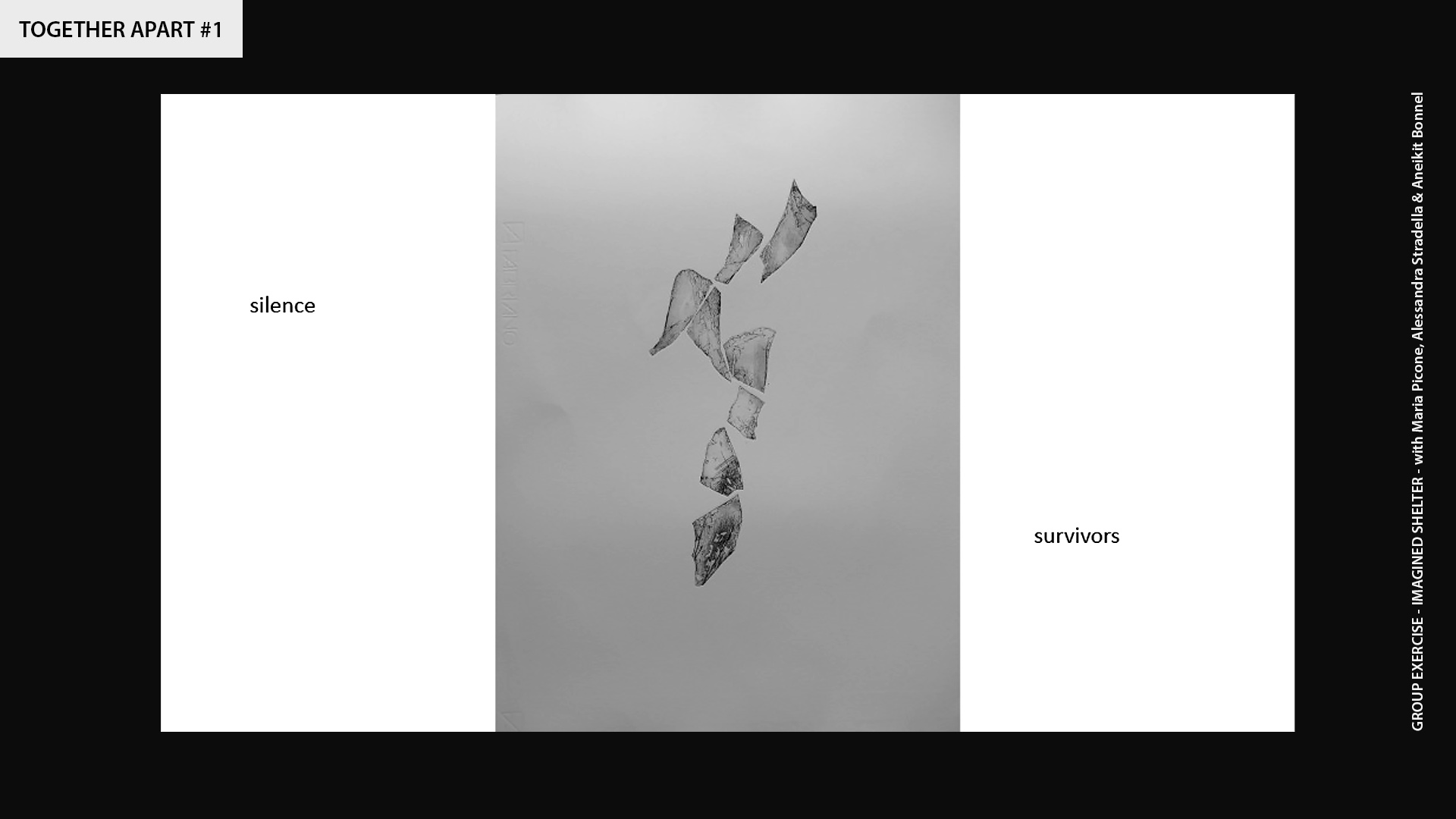
Related Activities
Exhibitions, Together Apart
#1 | SHELTER: results
Artists in dialogue
16.12.20
During 2020, we carried out the first two sessions of Together Apart. The first session took as a conceptual and practical framework the REFUGE and the second, the NEST.
Through those starting points, both of which refer to caring atmospheres and structures for coexistence, we were able to think and create in a wide variety of directions and layers. We reflected on our pandemic context, a situation for which we had to find ourselves in the virtual non-space, but also a situation thanks to which people from many different countries were able to work simultaneously.
Assuming this complex situation, more than 20 participants per session created new pieces –some in exercise format–, took up projects that they had already worked on in the past or collectively set out to create new projects that will continue to develop beyond the scope of our meetings.
Taking these refuge and nest issues also in their complexity, we asked ourselves questions that made each of the participants involve their personal experiences, memory, memories and experiences from each of their territories. We addressed questions that sought to keep us in constant movement; at times we went through very optimistic or pessimistic visions about the possibility or necessity of having a shelter or a nest, and at other times, we were able to articulate more complex visions, enduring in intermediate and liminal states. For both, we took as a theoretical structure of support and dialogue the thought of Félix Guattari presented in The Three Ecologies (1989). His ethical-political approach that highlights the molecular domains of sensitivity, intelligence and desire, as well as his articulation of the three ecological registers (environment, social relations and human subjectivity), helped us to expand our creations and thoughts in relation to shelter and nest.
During the first session, when asked about the conditions that a refuge can have and the conditions that we would like a refuge to have, the artists (coincidentally and by chance, we had a cohort one hundred percent comprised of women) generated sculptural pieces, artists’ books, photographs, videos, dance pieces and more, reflecting on the permeability or isolation structures that a shelter can have. Also, many artists started from their bodily memories to refer to the refuge and made improvisation and performance pieces. We created in relation to the refuge conditions presented by nature and the refuges that we create to protect ourselves from certain natural conditions. Memory as a refuge and shelters for memory also arose through textile practices or from the use of jewelry or objects with which we build links. Finally, the bonds and the community as spaces that shelter and spaces that imply care was another of the axes that we explored through pieces that included readings of texts and sound activations.
Together Apart has functioned as a program that opened up possibilities for meeting and collaborative creation. It has made possible the creation of new rhythms and synchronies for a limited time but whose reverberations and echoes continue to affect in unexpected directions.
Daniela Ruiz Moreno (curator-in-residency)
Related artists
- Alessandra Stradella
- Ana Vivoda
- Aneikit Bonnel
- Anna Rose
- Ariana Pirela Sánchez
- Caia Diepenbrock
- Carla Freschi
- Christine Bruce
- Dawn Langley
- Dolores Delia
- Gina Kukulski
- Giuliana Grippo
- Janette Hopper
- Jannelle Roberts
- Jill AnnieMargaret
- Judith Elisabeth de Haan
- Male Correa
- Roseanne Lynch
- Sara Minsky
- Shereen Shalhoub
